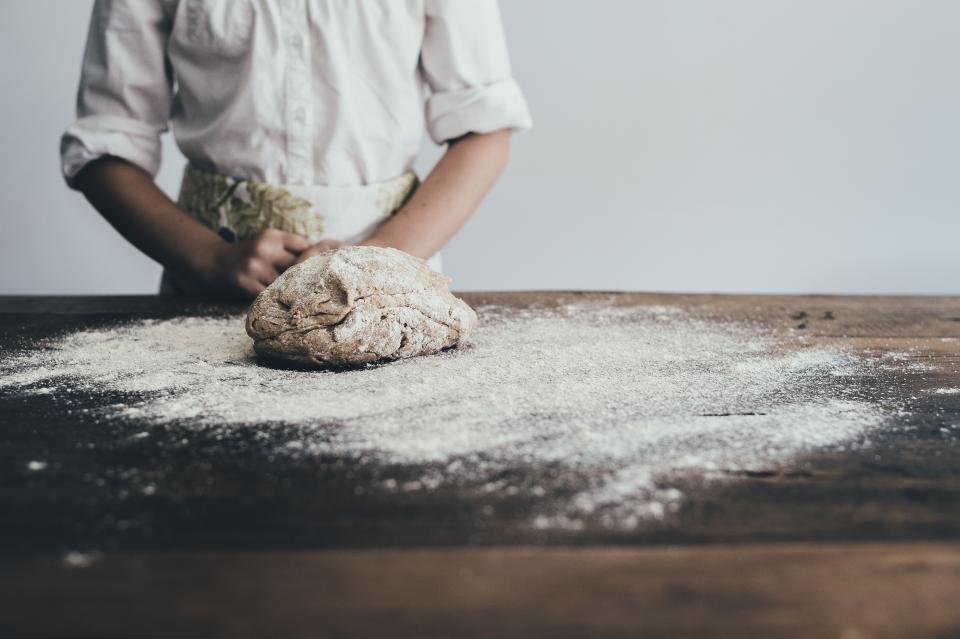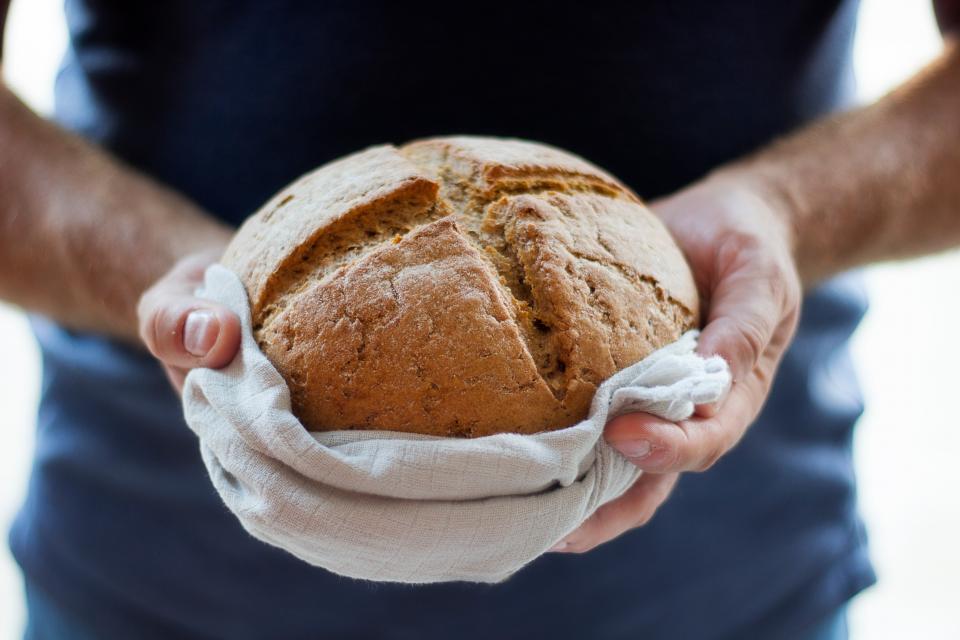Have you ever watched your feline companion kneading their paws on a soft surface, seemingly in a state of bliss? This endearing behaviour, often accompanied by purring, might appear to be a sign of contentment. However, the act of kneading, also known as "making biscuits," is deeply rooted in a cat's instinctive behaviour and holds fascinating insights into their history and development. This article delves into the world of feline kneading, exploring its origins, possible reasons behind it, and its significance for cat owners.
Part 1: The Science Behind Kneading

1.1. From Kittenhood to Adulthood: The Evolutionary Origins of Kneading
Kneading is a natural behaviour that cats inherit from their wild ancestors. Kittens begin kneading almost immediately after birth, using their tiny paws to stimulate milk flow from their mother's teats. This instinctive action is vital for their survival, ensuring they receive adequate nourishment. As kittens grow, they continue to knead, even after weaning. This behaviour is often observed on soft surfaces like blankets, pillows, or even their favourite human's laps. This early kneading serves to develop the muscles in their paws, as well as refine their fine motor skills, preparing them for the challenges of hunting and navigating their surroundings.
1.2. The Importance of Scent Marking: A Primal Instinct
Beyond its origins in milk-seeking, kneading serves as a form of scent marking for cats. Their paws possess scent glands that release pheromones, allowing them to leave their individual signature on their surroundings. These glands, located between the paw pads, release a unique combination of chemicals that act as a personal identifier. By kneading, cats are essentially claiming their territory and making their presence known to other felines. This instinctive behaviour helps to establish their place in the social hierarchy and provides a sense of security, especially in multi-cat households.
1.3. The Role of Sensory Stimulation: A Symphony of Senses
Cats are highly sensitive creatures, and their paws play a vital role in sensory exploration. The pads on their paws contain numerous sensory receptors, which are responsible for touch, pressure, and temperature perception. These receptors are highly sensitive, allowing cats to experience the texture, warmth, and softness of their surroundings. When cats knead, they are engaging these receptors, providing themselves with pleasurable stimulation. The repetitive motion of their paws can release endorphins, contributing to their sense of well-being.
1.4. The Importance of Claws: A Balancing Act
While not as prominent as their scent glands, cat claws also play a role in kneading. The act of extending and retracting their claws helps to distribute the pressure evenly across the surface, providing a more intense sensory experience. This also helps them to control the intensity of their kneading, allowing them to adjust their pressure based on the surface they are interacting with.
Part 2: The Different Kneading Styles

2.1. The Gentle Knead: A Sign of Contentment
Many cat owners associate kneading with contentment, and often observe their cats performing this behaviour when they are feeling relaxed and secure. This gentle form of kneading usually involves short, rhythmic movements of the paws, often accompanied by purring. This behaviour is a clear indicator that your cat feels comfortable and safe in their environment, especially when they choose to knead on you.
2.2. The Energetic Knead: Expressing Excitement
When cats are feeling playful or excited, they may engage in a more vigorous form of kneading. This energetic kneading involves deeper, more forceful movements of the paws, often accompanied by a more pronounced purr or even a playful swat. This behaviour indicates a surge of energy and anticipation, and is frequently observed in response to exciting events like the arrival of a favourite toy or the opening of a food bowl.
2.3. The Frustrated Knead: A Sign of Discomfort
In some instances, kneading can be a sign of frustration or anxiety. This behaviour often involves a more intense kneading motion, and may be accompanied by scratching or hissing. This can be especially evident when cats are feeling confined, bored, or stressed. It's crucial to pay attention to your cat's body language and overall behaviour to understand the context behind their kneading.
Part 3: Understanding Your Cat's Kneading Behaviour

3.1. Paying Attention to the Context
To decipher the meaning behind your cat's kneading, it's essential to consider the context in which it occurs. Is your cat kneading on a soft blanket after a meal, suggesting contentment? Are they kneading on a new toy, indicating excitement? Or are they kneading on a specific spot in your home, seemingly marking their territory? By observing their behaviour in different situations, you can gain valuable insights into their emotions and motivations.
3.2. Recognizing the Signals
Along with the kneading motion itself, pay close attention to your cat's body language. Are they purring, indicating contentment? Are they vocalising, expressing excitement? Are they arched and tense, possibly feeling anxious? Each of these signals can provide further clues to understanding the meaning behind their kneading behaviour. For example, if a cat is kneading on a blanket and purring softly, it likely signals contentment. However, if a cat is kneading and hissing or swatting at the same time, it could indicate frustration or discomfort.
3.3. Addressing Potential Issues: A Balanced Approach
If your cat's kneading becomes excessive, causing discomfort or damage to furniture, it's important to address the issue. This may involve providing them with alternative surfaces to knead on, like cat beds or scratching posts. It's also essential to rule out any underlying medical conditions that could be contributing to their behaviour. For example, cats with arthritis may experience increased pain when kneading, which could lead to more frequent or forceful kneading.
Part 4: The Benefits of Kneading for Cats
4.1. Physical and Mental Stimulation
Kneading provides cats with physical and mental stimulation. The repetitive motion of their paws activates sensory receptors and releases endorphins, leading to a sense of well-being. It also allows them to engage their instincts and express their innate behaviours, promoting their overall mental health.
4.2. Stress Relief and Relaxation: A Natural Calming Mechanism
Kneading can be a stress-relieving activity for cats. The rhythmic motion and sensory stimulation can help them relax and unwind, reducing anxiety and promoting a sense of peace. It's a natural behaviour that allows them to cope with stress and maintain a balanced emotional state. This is especially true for indoor cats, who may experience stress from boredom or lack of stimulation.
4.3. Communication and Bonding: A Language of Love
Kneading is a form of communication for cats. By kneading on their owners, they are essentially marking them as part of their territory and establishing a bond. This behaviour can be seen as a sign of affection and trust, solidifying the relationship between cat and owner. Kneading can also be a way for cats to show their love and comfort to those they trust.
Part 5: Addressing Concerns About Kneading
5.1. Damage to Furniture: Prevention and Solutions
One of the primary concerns for cat owners is the potential damage that kneading can cause to furniture. To mitigate this, consider providing your cat with alternative surfaces to knead on, such as cat beds, scratching posts, or even specially designed kneading pads. These surfaces offer a more appropriate outlet for their instinctive behaviour and help preserve your furniture. You can also use deterrents like cat-safe sprays or covers on furniture to discourage kneading.
5.2. Excessive Kneading: Identifying Underlying Causes
Excessive kneading can be a sign of underlying medical conditions, such as arthritis or pain in their paws. If you notice a sudden change in your cat's kneading behaviour, particularly if it is accompanied by other symptoms, it's essential to consult a veterinarian. Excessive kneading could also be a sign of anxiety or stress, which may require addressing the root cause of these emotions.
5.3. Managing Kneading Behaviour: A Multifaceted Approach
Managing kneading behaviour requires a multifaceted approach. This includes providing alternative surfaces for kneading, understanding the context behind their behaviour, and addressing any underlying medical conditions. It's also crucial to maintain a consistent routine and provide ample opportunities for play and exercise to help keep your cat mentally and physically stimulated. Enrichment toys, interactive games, and regular play sessions can help to reduce boredom and stress, leading to a decrease in excessive kneading.
Part 6: FAQs about Cat Kneading
6.1. Why does my cat knead on me?
Cats knead on their owners as a sign of affection and trust. The behaviour originates from kittenhood, when they kneaded on their mother's teats to stimulate milk flow. Kneading releases endorphins for both the cat and the owner, strengthening their bond. It's a way for them to feel comfortable and safe in your presence.
6.2. Is kneading always a good thing?
While kneading is generally a positive behaviour, it can become problematic if it becomes excessive or causes damage. If your cat's kneading is causing discomfort or damage to furniture, it's important to address the issue.
6.3. Can I stop my cat from kneading?
You can't completely stop your cat from kneading, as it's an instinctive behaviour. However, you can redirect it by providing them with alternative surfaces and discouraging kneading on furniture.
6.4. Should I be concerned about my cat's kneading?
If your cat's kneading behaviour suddenly changes, becomes excessive, or is accompanied by other unusual symptoms, it's best to consult a veterinarian to rule out any underlying medical conditions.
6.5. Does kneading mean my cat loves me?
Kneading on you is often interpreted as a sign of affection and trust, as it indicates your cat feels comfortable and safe in your presence. However, it's not the only indicator of love, and cats express affection in many different ways.
6.6. Is there a way to train my cat out of kneading on furniture?
While you can't completely eliminate kneading, you can train your cat to associate kneading with a designated spot. Offer them an alternative surface, such as a cat bed or scratching post, and reward them with positive reinforcement when they knead on it.
6.7. Can I use a spray bottle to stop my cat from kneading?
While using a spray bottle might seem like a quick fix, it's not a recommended approach. This method can create fear and anxiety in your cat, potentially damaging your relationship. It's better to focus on redirecting their behaviour and providing them with alternative outlets for their kneading instincts.
In conclusion, kneading is a natural and often endearing behaviour in cats. It's rooted in their evolutionary history and serves multiple purposes, including scent marking, sensory stimulation, and stress relief. While it can be a source of amusement for cat owners, it's essential to understand the context behind their kneading and address any potential concerns. By providing your cat with alternative surfaces, understanding their needs, and addressing any underlying issues, you can foster a harmonious relationship with your feline companion and enjoy the unique charm of their kneading behaviour.
Everyone is watching
-

Are Cat Ribs Flexible? Understanding Their Anatomy
CATS & KITTENSThis article delves into the fascinating world of feline anatomy, exploring the flexibility of cat ribs and ho...
-

Can Cats Eat Bananas? (Everything You Need to Know)
CATS & KITTENSThis article dives into the intriguing question of whether cats can safely enjoy the sweet, yellow fruit, bana...
-

Cat Lifespan: How Long Do Cats Live?
CATS & KITTENSThis comprehensive guide explores the factors influencing the lifespan of our feline companions, providing ins...
-

Can Cats Get COVID-19? What You Need to Know
CATS & KITTENSThis article will delve into the fascinating world of feline COVID-19 susceptibility. We'll explore whether ca...
-

Can Cats Eat Eggs? A Complete Guide to Egg Safety for Your Feline Friend
CATS & KITTENSWhen it comes to treating our furry companions, we all want to ensure we're doing what's best for them. Eggs...
